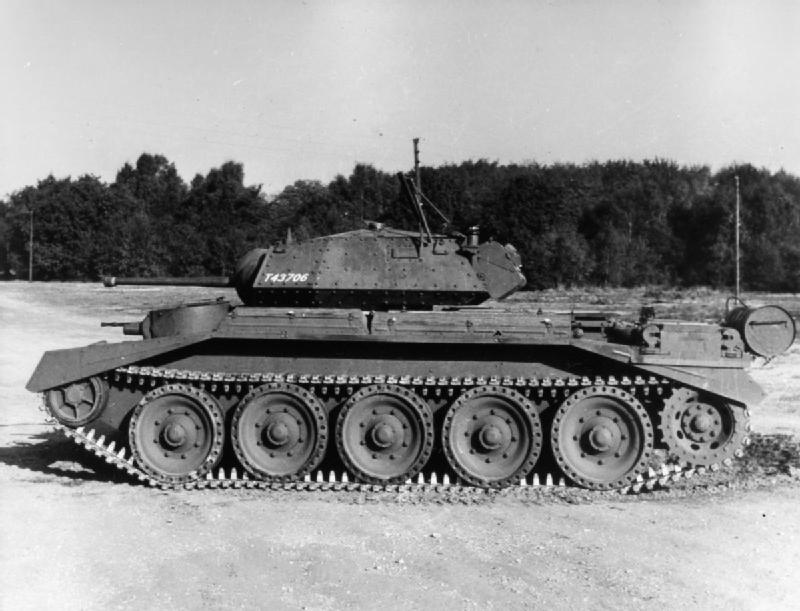From a little research project I was doing a while back. These were probably the best of them:
Valentine
Great Britan 1939-1945
Production: 7,300-8,275
Armor: 8-65mm
Range: 90 mi.
Speed: 15 mph (24 km/h)
Armament: QF 2-pounder + 7.92mm machine gun
QF 2-pounder:
Caliber: 40mm
Elevation: -13 to +15 degrees
ROF: 22 rounds/min
Muzzle velocity: 26 ft/sec
Effective range: 1000 yards
The most numerous British manufactured tank of World War II, the Tank, Infantry, Mk III, Valentine was known mainly for its low cost and high reliability. Although criticized for its speed and its weak gun, the Valentine was liked due to its small size, reliability and generally good armour protection.

Crusader
Great Britan 1940-1943
Production: 5,300
Armor: 32mm
Range: 322 km.
Speed: 24-42 km/h (off-road/road)
Armament: QF 2-pounder (65 rounds) + 7.92mm machine gun (5,000 rounds)
QF 2-pounder:
Caliber: 40mm
Elevation: -13 to +15 degrees
ROF: 22 rounds/min
Muzzle velocity: 26 ft/sec
Effective range: 1000 yards
One of the primary cruiser tanks of the United Kingdom during World War II, the Tank, Cruiser, Mk VI Crusader (A15) was perhaps the most important British tank of the North African Campaign. Although the Crusader was faster than any tanks it opposed, its potential was limited by a relatively light 2-pounder gun, thin armour and mechanical problems. A particular tactical limitation was the lack of an High Explosive (HE) shell for the main armament - these existed but were never supplied.

Churchill
Great Britan 1941-1945
Production: 7,368
Armor: 16-102mm
Range: 90km
Speed: 24 km/h (15 mph)
Armament: QF 6 Pounder + 2 machine guns
QF 6 Pounder:
Caliber: 57mm
Elevation: 15 degrees
ROF:
Muzzle velocity: 800-900 m/s
Effective range:
Maximum range: 5,000 yards (4,600 m)
During the Second Battle of El Alame a select group of five Mk III's, known collectively as 'King Force' went into battle. All were heavily shelled by German anti-tank guns, all but one Mk III made it back with little damage, one tank was said to have been struck up to 80 times. In the following Tunisia and Italian campaigns, the Mk III and its immediate successors continued to prove their usefulness.
